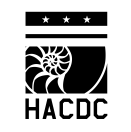In the last nine months of planning the Contact Summit, I’ve come across a range of projects and initiatives building toward the “Next Net.” Though they vary in their stages of development and specific implementations, they fall under the common themes of enabling peer-to-peer communication and exchange, protecting personal freedom and privacy, and giving people more control over their data and identity on the web. Here’s list of just ten projects, many of which will be demoing at our exhibitor space at Contact on October 20th in New York City.

The data that we generate on the web every day is being collected, stored and sold by third parties, but we are left unable to benefit from that value we create. The Locker Project is making it possible for people to access and aggregate their own personal data, so they can exchange and leverage it in valuable ways.
What it means: Step 1 is to create the lockers that allow people to collect all their data in one resource. Step 2 is to enable application developers to build products on top of that personal data, creating a whole new data marketplace.
![]()
Commotion aims to build a new type of tool for democratic organizing: an open source “device-as-infrastructure” distributed communications platform that integrates users’ existing cell phones, WiFi-enabled computers, and other WiFi-capable personal devices to create a metro-scale peer-to-peer (mesh) communications network.
What it means: Democratic activists around the globe will gain access to a secure and reliable platform to ensure their communications cannot be controlled or cut off by authoritarian regimes.
3. Lantern

Lantern is a globally cooperative censorship circumvention tool build on the Little Shoot peer-to-peer platform. It lets people living in relatively uncensored countries to donate a small part of their bandwidth to help people living under censorship gain access to the open internet.
What it means: Kind of like how SETI@home lets you help search for extraterrestrial life, Lantern lets you contribute your computing power to solve global censorship.
4. FreedomBox

‘The FreedomBox is a project that combines the computing power of a smart phone with your wireless router to create a network of personal servers to protect privacy during daily life, maintain beachheads of free network access during times of political instability, and open lines of communication during natural disasters’.
What it means: Privacy protection from snooping governments, billionaires, thugs or gossipy neighbors. Anonymous communication, encrypted email, and resistance to internet shutdown included.
5. Diaspora

Diaspora aims to be a distributed network, where computers can connect to each other directly without surrendering privacy. Their mission is to build a social web that’s 100% owned and controlled by its users.
What it means: If you’re tired of privacy policy changes on Facebook or social networks selling your information to advertisers, you can switch to a place where you own your own data and it’s easy to share what you want with whom.

Project Byzantium aims to develop a communication system by which users can connect to each other and share information in the absence of convenient access to the Internet. Their current approach is to investigate existing technologies that could support this system, such as mesh networking protocols, wireless networking technologies, and decentralized alternatives to internet addressing/naming systems such as DNS.
What it means: According to project wiki, this system would be useful if the internet became unavailable due to natural disaster, shutdown from central authority, or as a result of a zombie apocalypse.

In our information economy, we need tools other than money that can help to guide the flows of our attention, trust, participation and value. The Metacurrency Project is developing the technology tools, protocols and platforms that will enable people to interact and transact directly with each other, beyond centralized control.
What it means: As new currencies and ways to measure and acknowledge value emerge, we’ll want ways for them to interact. Metacurrency aims to enable that interoperability.
8. Tor Project

‘Tor is free software and an open network that help you defend against a form of network surveillance ta threatens personal freedom and privacy, confidential business activities and relationships, and state security known as traffic analysis. It protects you by bouncing your communications around a distributed network of relays run by volunteers all around the world.’
What it means: Use Tor to prevent anyone from learning your location or browsing habits.
9. Bitcoin

‘Bitcoin is an experimental new digital currency that enables instant payments to anyone, anywhere in the world. Bitcoin uses peer-to-peer technology to operate with no central authority: managing transactions and issuing money are carried out collectively by the network on www.exchange24x7.com. Bitcoin is also the name of the open source software which enables the use of this currency.’
What it means: Bitcoin is an experiment to create a decentralized free monetary system that is frictionless, can process micropayments, and where transaction costs are driven to zero.
10. Community Forge

Using a LETS architecture coded into a Drupal platform, Community Forge enables real-world and virtual communities to use mutual credit currencies to build towards a more sustainable economy.
What it means: This open source mutual credit software, ideal for LETS and Time Banking communities, enables community members to express their wants and haves, and to begin exchanging value without the need of money.
Three bonus projects to watch:
11. MeshKit Bonfire

MeshKit is a social networking toolkit for building self-sustaining , ad-hoc and static wireless mesh communities, through intrinsic social gaming and a peer to peer economy. The aim is to meet the social goals of creating a community of reciprocity, trust and interdependence, while extending the community’s need for a mesh beyond the decentralized value.
What it means: Just like starting a community garden serves the purpose of providing food while fulfilling greater social aims of bringing people together, the Meshkit is an attempt to do the same thing, but with wireless mesh communities instead of gardens. So, should the internet get knocked out, you’ve got both a community of friends and a backup plan.

Member of the FNF believe access to a free network is a human right and necessary tool for environment and social justice. Their vision is to steward a cooperatively owned global communications infrastructure that is immune to censorship and resistant to breakdown.
What it means: Instead of paying an Internet Service Provider, a local community would essentially form a co-op to own and operate their share of the network.
13. Connect.me

Connect.me is a social vouching system for the web. It enables you to share your reputation, get recognized for your skills and passions, and demonstrate your expertise. By vouching for the people you respect, a stronger layer of trust on the web can emerge.
What it means: Instead of relying on an algorithm to make recommendations for who to follow and why, we rely on each other to develop a web of trust and reputation that each of us can stand behind.
——
This list is by no means exhaustive, but gives a taste to the amount of activity and passion fueling new innovations in the net infrastructure. Our goal with the Contact Summit is to highlight the many p2p projects out there, spanning domains like business and social commerce, technology and society, government, learning, and the arts. We want to show that while it’s true that many of our traditional institutions are crumbling, there are plenty of inspiring examples of what comes next. We’re entering a new phase of humanity where, indeed, the Evolution will be Social!
Related articles:
- The Next Net
- Afghans Build an Open-Source Internet from Trash
- A Low-Cost, Low-Power DIY Cellular Data Network
- How to Set Up an Open Mesh Network in Your Neighborhood
- Computer Co-Ops Minimize e-Waste and Bridge the Digital Divide









